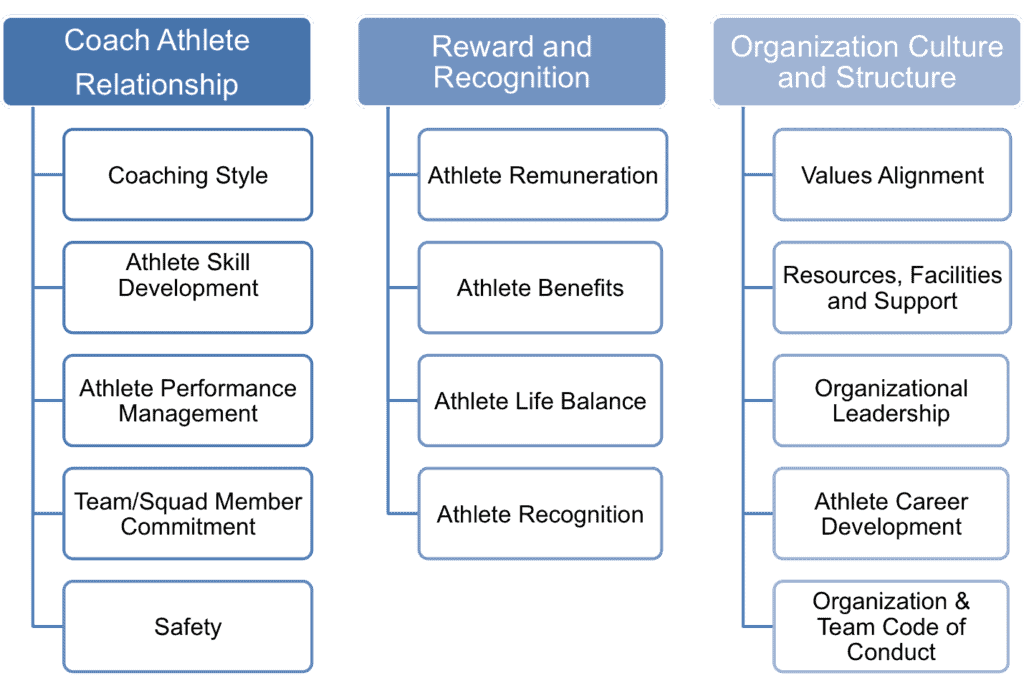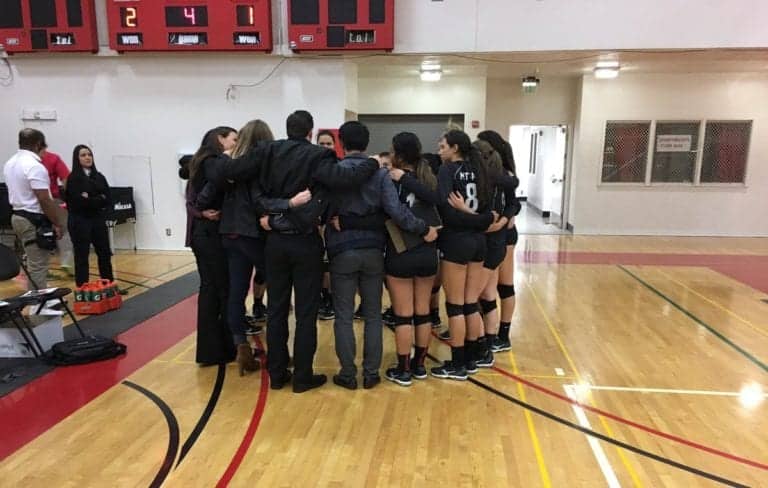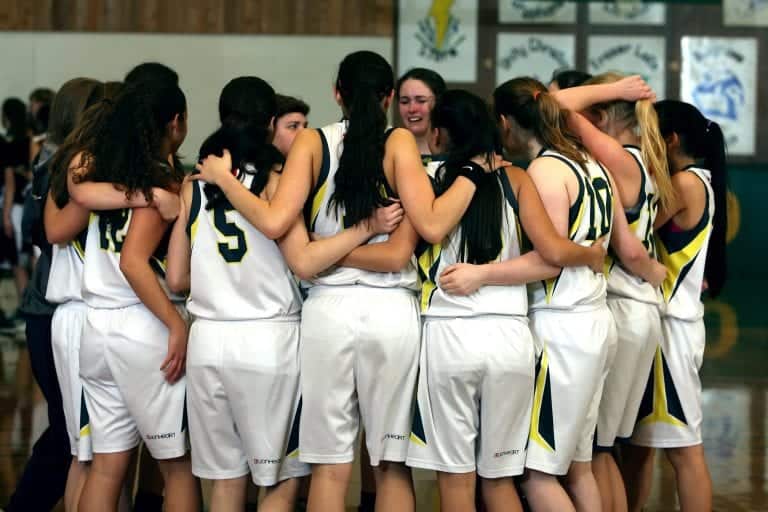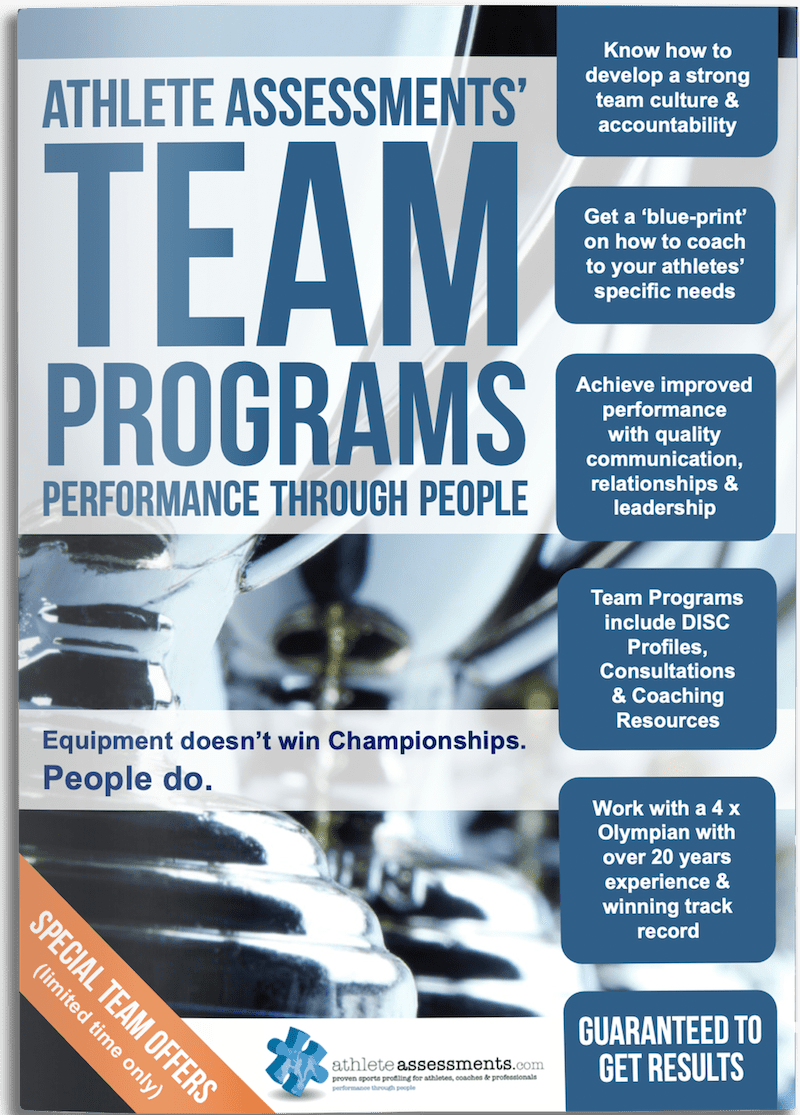As sure as death and taxes, in every sports season there are winners and losers. More specifically, there is only one winner and then all the rest. For the teams who don’t win, everyone (fans, players, administrative staff, coaches, the list goes on…) has an opinion on why ‘their’ team was not successful this season.
The reality is, winning a championship is never easy. Today more than ever, even before getting to the finals, seasons are defined by a match or game, midway into the season which a team should have won but didn’t. To achieve this ultimate success you must have the ability to piece together a cryptic jig saw puzzle, which contains a thousand or more pieces, and to put this puzzle together not just once, but week in and week out. Knowing which pieces you have in front of you is one challenge; another is knowing which order to put them in, and of course, knowing where to start.
Finals are Earned, Not Deserved
When I watch the end of a professional season, what disturbs me the most is when a team’s success is only measured via the win-loss record and/or only whether the team made the finals or play offs. It appears as if it is any team’s given right to play in the finals series. Finals series are played by teams who embody the highest standards of performance and behavioral accountability week in week out. Not every team has these high standards (even if they think they do) so not every team deserves to play finals. This can be a hard pill to swallow, but it is true.
It seems that those watching and involved with the team develop a warped perception of what they believe the team should achieve and what they ‘deserve’.
Everyone wants to win the championship, of course. However, most do not have the pieces of the puzzle in the right place to do this and more than this, most teams do not even have the correct puzzle pieces.
When the Team Wins, Congratulate the Players. When the Team Loses, Blame the Coach
Of course the most common outcome when the team is not successful, from a winning point of view, is the coach is fired or at the very least, the coach receives the large majority of the blame. Now sometimes this is a good and fair place to start, especially if it is obvious the coach has poor relationships with their athletes, lacks communication skills, has poor game knowledge, uses the wrong game plans, etc.
In reality, coaches at the highest level, generally do well in the before mentioned areas. When I think about some of the teams we work with, whilst many have won championships, the reality is that winning is incredibly difficult to achieve each year. It can’t possibly be all of the coach’s fault, there is more to it than this. While their role in achieving success (or not) is absolutely fundamental, they are not the only ones contributing and nor should they be the only ones receiving all the finger pointing. Or if we are going to blame them, let’s at least have clarity about what has been missed. As obvious as it seems, the coach can’t get on the field or court and play for their team. That is the athletes’ job. From my observations, a significant often overlooked factor as to why a team doesn’t achieve, comes down to the players on the field or court.
Athlete Accountability
I am staggered at the lack of accountability I see in the athletes of today. Rarely do you see athletes and players putting their hands up and taking ownership over their poor outcomes. Perhaps, because high-performance professional sport involves so many additional people and support staff, it makes it easier to be able to point the finger elsewhere.
The very fact that so few athletes take responsibility for their performances, means their performances are likely to often be average, sometimes great but mostly unpredictable, and usually will always be beaten by another athlete or team who take massive levels of pride in how they “turn up” each week. Today more than ever, seasons are defined by a match or game, midway into the season which a team should have won but didn’t. Teams that were content to “work their way” into the season, and not committed to win every possible game, every week, from the very first game, miss out in getting to the finals due to their ‘slow start’.
Success has Common Behaviors and Systems
So how does an organization create successful seasons year after year? Knowing what happens within the walls of a club or professional team is not much of a secret. In professional sport, where players and athletes regularly move around and talk among themselves, it is hard to keep secrets. To find the answer to this important question, just study any successful organization, in any field, and you will find common patterns of behavior and systems. Within the business world, the most successful organizations who have sustained high-performance for years on end, use ‘engagement measures’ to literally measure the degree to which their employees hearts and minds are captured in what they are doing, who they are doing it for and the organization they represent. We also talk about this concept in our article, “Do Your Athletes Care?”
The most successful organizations have the highest number of engaged employees. It is pretty simple really. Engagement creates a very important performance factor in people, not just employees (which by the way, professional athletes are) but also, sports people. Engaged people, deliver an additional 30% in discretionary effort (DE). It is this effort, which is the defining factor in successful people, teams and organizations. Now before I talk about what discretionary effort is, let me just let you in on a little secret…
No sporting team even measures engagement levels in their players or athletes (employees). It so far only happens in the business world. Can we learn something from the business world? Certainly the business world has benefited from many sporting tools and lessons.
The Critical Piece is Discretionary Effort
Discretionary effort is the effort which is opted in. Not the effort you have to give, but the effort you choose to give. It is the difference between the effort required to perform to the base level in your role on the team and the effort required to lift your on and off field performance statistics to a higher level. It is about doing your job to the highest possible level of execution. It is not about going beyond your role and doing everyone else’s job. Commonly we see coaches, fans and all the others mentioned earlier describing how hard someone works because they try to do so much on the field. The issue is that when they do too much and overstep their role, they undermine the efforts of others, and team performance suffers.
Players and athletes who give high levels of discretionary effort behave in a way which is always in the team’s best interest. They execute the game plan, they support other team members, they think about how they can add value to others on the team, and they do not lose their composure giving away “silly” penalties. Additionally, they communicate with the coach and team members, they make adaptations to their own behavior for the team’s benefit and they always have a willingness to operate outside their comfort zone in making changes, doing what the coach suggests with the belief that this will help the team succeed. Those who display high levels of discretionary effort know that it is not all about them. They honor the game in all that they do. In another of our articles, “Bonding Athletes to their Coach, Team and Club” we talk about the same topic and use the Say, Stay, Strive concept to gain a measure of the engagement level.
So what creates a desire, to give higher levels of discretionary effort? Within the business world, there is a model which gives all the answers you need. In the context of the business world, this model is excellent and for those organizations which use it, they consistently outperform those who do not. In many ways, success in business is harder than success in sport. This is because the competition field is global in nature. It is hard to predict where the next big threat is going to come from (look at Kodak and you will see how an unrelated industry put them out of business) and the competition for the best talent is incredible. For example, two unrelated industries both compete for the best information, technology people and finance people. You can do the same job in any organization, but you choose one over the other for a variety of reasons. Now if we look at sport, by the time an athlete reaches elite status, other than in a few rare exceptions, they are locked into their chosen sport and the only decision becomes, what team do I play for?
The Athlete Engagement Model
The model I refer to is outlined below. When we review a sporting program, this is how we do it. It is well proven that these below areas are what are known as “engagement drivers”. The list of areas, when well defined and developed, literally creates engaged people. Some drivers are more important than others, but all represent a piece of the jigsaw puzzle and great programs deliver on these drivers, thereby creating an atmosphere of engagement where all people involved WANT to give their best.
As you can hopefully see, the model encompasses three pillars. From our perspective, each pillar is critical and of most importance is Pillar 1. This is the Pillar which contains the elements of the Coach Athlete Relationship. Look at most recent studies into sporting success and the quality of the teams’ relationships is a fundamental success factor. This pillar also encompasses the team member commitment factor. It should be obvious that the higher a team scores in team member commitment, the more successful the team is likely to be.

Another critical factor based on a lot of reviews of successful and not as successful teams, is the degree to which a team scores highly in the Team / Club Values Alignment factor. This is essentially the degree to which a team has defined its identity, developed a set of values, and unearthed the behaviors required to live these values on a daily basis. This factor is inherently linked to the before mentioned, Team Commitment factor. A question we ask when reviewing a program is, “based on your team’s agreed values and subsequent behaviors, to what degree did you live these on a daily basis?” we then ask, “To what degree did your team members live these values and behaviors.” Could you believe that successful teams rate themselves highly when assessing this factor and unsuccessful teams typically lower! The interesting thing here is that the difference between rating yourself and team members a 9/10 versus an 8/10 is often the difference between making finals and not. Remember, sport is defined by hundredths of a second and 1% differences here and there.
Where to from here?
So after reviewing this model, should you wish to use a framework to review your next season, then please speak to us. From our perspective, a review must be what it says it should be- that is a review against a set of given parameters which all are proven to be vital pieces of the jigsaw puzzle. Otherwise it cannot be a review; it can only be an opinion of which everyone involved in the team will have a different view.
Finally, remember this. A jigsaw puzzle is only complete when all the pieces are present and in the correct position. Your program could have all the necessary pieces but in the wrong order or weighting. Or you simply do not have all the necessary pieces. Do you know what the case is?
At Athlete Assessments, we’re here to provide you with excellence in service and to help you be your best. If there is anything we can assist you with, please Contact Us.
Recommended Articles
I was listening to a podcast with a successful Australian cyclist who had won an incredible 11 world titles, but, it wasn’t these titles that shaped her as a competitor, it was the 29 world titles that she contested and lost.
Head Coach Ali Carey-Oliver achieved unprecedented success at Mt. San Antonio College after her women’s Volleyball program won their first ever Conference Championship with a perfect 8-0 conference record and an outstanding 20-4 season overall.
Athlete Engagement is a critical concept for all sports coaches to understand. 'Engagement' is a borrowed term from the business world. There, it is a measurement of the degree to which an employee’s heart and mind is committed to their role, leader and company. It is so important in business because engagement has a direct and significant link to profitability. Research shows engaged individuals deliver an additional 30% in discretionary effort compared to disengaged individuals.
As a coach ensuring your athlete is always striving to gain a 1% improvement in their performance can be one of the hardest parts of your job. At Athlete Assessments, we often speak about the importance of a quality coach-athlete relationship, and how this can be used to improve athlete performance. This article discusses how to improve emotional bonds and engagement, and how understanding these factors improves your athlete’s performance.










